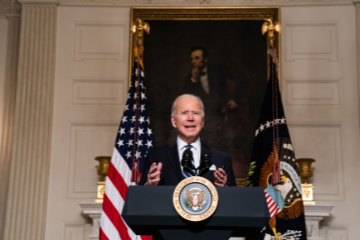To improve India's role in Central Asia, its focus should recognize the diversity of relationships that are possible - economic, defence, and connectivity. Politically and historically, each of the five countries in the region is distinct.

Prime Minister Narendra Modi’s recent visit to the five Central Asian countries marked India’s renewed interest in the region. In the light of the BRICS and SCO summits held at Ufa, Russia, Observer Research Foundation organised a roundtable discussion in Delhi to discuss the geopolitical situation in Eurasia. Eurasia is vast, and current events range from the turmoil in Ukraine to the crisis in West Asia. However, the discussion primarily focused on Central Asia -- Kazakhstan, Kyrgyzstan, Tajikistan, Turkmenistan and Uzbekistan.
The guiding question was about what India can achieve and what can it provide to these countries, considering the already significant presence of other major powers in the region, namely Russia and China. India’s membership in the Shanghai Cooperation Organization (SCO) has increased the scope for cooperation, especially in security matters, with all the aforementioned countries.
While China and Russia have a significant presence in Central Asia, there is minimal Western involvement. Both are united in their opposition to US dominance in international affairs, and both in a position to challenge it in a region that is historically and geographically very much in their spheres of influence. Nonetheless, they both want to avoid direct confrontation with the US.
The relationship between Russia and China is more complex than it seems. Russia is not particularly threatened by China’s rise, and there is mutual cooperation between the two to counter the US’ dominance. Regardless, Russia is still aware of China’s position as a rival, and China is also aware of Russia’s current position in the eyes of the United States. Hence its relationship with Russia is balanced so as to not harm ties with the US.
Central Asia is not the primary strategic focus of the players involved, including India. Russia, for example, is much more concerned with Europe. However, the consensus was that none of the powers in the region want to see a hostile power exerting its influence, something that is virtually guaranteed through the CSTO (with the exception of Turkmenistan) as non-members are prohibited from establishing a military presence in the member countries.
China has already made several inroads into these countries, most notably through its "One Belt, One Road" initiative. It is a concerted push to expand China’s influence overseas. China is already a major trading partner of the Central Asian countries, and Chinese investment could be used to meet its infrastructural shortfalls. It is a continuation of China’s "Go West" policy, aimed at overcoming regional disparities in its development and redistributing its abundance of resources throughout the region, thereby integrating it more closely with its economy.
The OBOR project is a way for China to establish a greater role for itself in geopolitics, especially in a region it considers its "strategic backyard". It is also a way to diversify China’s trade routes and reduce its dependence on the Straits of Malacca and sea routes, as well as a firm land connection to mainland Europe. There was some scepticism about whether the project was too longsighted to achieve any concrete returns on investment. There is also the problem of creating demand to fuel trade, and the considerable security challenges that could make it difficult for China to withdraw once it is dragged in. Increased economic activity will not solve all problems, and China’s troubled relationship with its Uighurs could become an issue. Still, there is no doubt that as a way to project China’s power through non-confrontation and reassurance, OBOR is very effective.
Russia, meanwhile, has had no real opposition to the scheme and it has only increased its cooperation with China through the SCO. There is additional cooperation through the Eurasian Economic Union. There has also been talk of merging the CSTO with the SCO, which includes four of five Central Asian states. Along with Iran, Russia is a major exporter of oil while India and China are large consumers. There is scope for cooperation here, between buyers and sellers.
India, too, can expand its influence in the region although there was a feeling that the region has been neglected so far. India’s primary focus is on other countries, and it does not share borders with any of the Central Asian countries. Stability in the region is still important for India. So it needs to be a part of the conversation and needs to think about what it can achieve through cooperation and what it can provide that is not already provided by Russia and China.
Concerns were raised about the region’s security. With the emerging threat of ISIL, the region’s porous borders and the problem of drugs and arms, achieving stability will be a major challenge. Efforts are being made through intelligence sharing and anti-terror exercises through the Regional Anti-Terrorist Structure of the SCO, which is an area where India can be valuable.
A theme that arose was the recognition of the region’s complexities and contradictions rather than simplifying them as one homogenous block of countries. There was some criticism of the Prime Minister’s visit to the five Central Asian states insofar as they were treated as one block rather than recognizing the complexities within them. Kazakhstan especially has had closer ties with India, backing India’s bid for a permanent Security Council seat. Tthese connections seem to have been looked over.
In his speech at Nazarbayev University in Kazakhstan, PM Modi emphasized the role Central Asia plays in connecting various regions. The shortest route to Central Asia is through Pakistan, and this could be the reason for increased cooperation or increased tension between the two countries. Both countries have been approved for SCO membership, and that is one avenue where cooperation could be possible.
As for India’s position in the larger geopolitical arena, its goal is not to undermine the West. A multipolar world is called for when one is not on good terms with the dominant power. India’s problems with the international system are more economic in nature, such as voting rights in international financial institutions, and so the focus on alternatives such as the New Development Bank. Ending Western institutions is not India’s goal-it would be better suited to navigating frictions between eastern and western ones. If possible, India should try and come up with alternatives of its own to projects like OBOR.
However, India must also recognize its limitations in Central Asia. It lacks geographic access. Internal development is equally important if it is to give India a space to expand in the region-taking care of internal infrastructure shortfalls is equally, if not more important. India’s continental ties in general have been limited-border disputes have dragged it into the fray, but the maritime area is really where it can assert itself.
India’s focus, therefore, should recognize the diversity of relationships that are possible-economic, defence, and connectivity. Politically and historically, each of the five countries is distinct. India needs to identify areas where it can contribute effectively, while being mindful of its own internal needs, and recognizing its strengths that tend to lie in the maritime sector.
(This report is prepared by Kanak Gokran, research Intern, Observer Research Foundation, Delhi)
The views expressed above belong to the author(s). ORF research and analyses now available on Telegram! Click here to access our curated content — blogs, longforms and interviews.




 PREV
PREV

